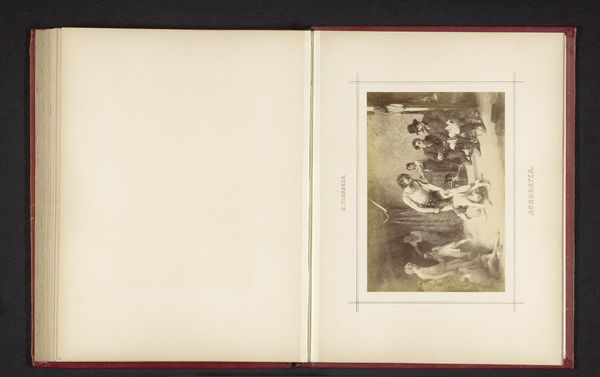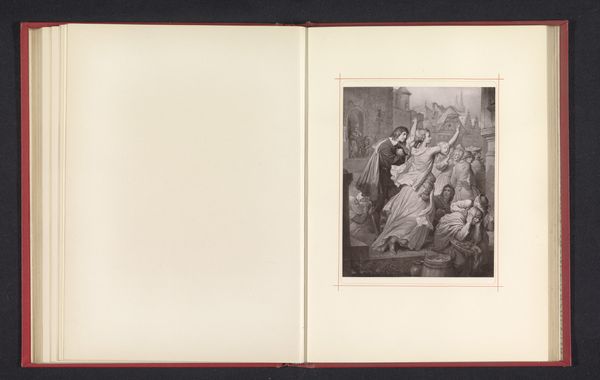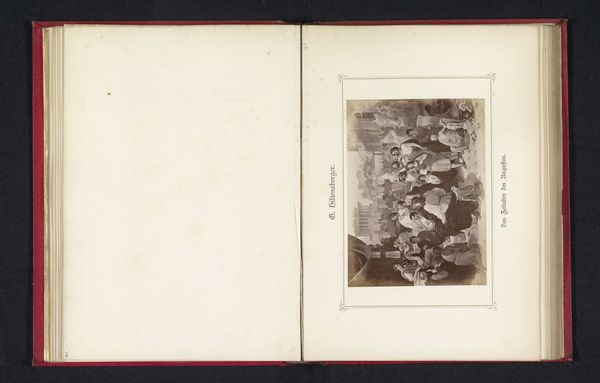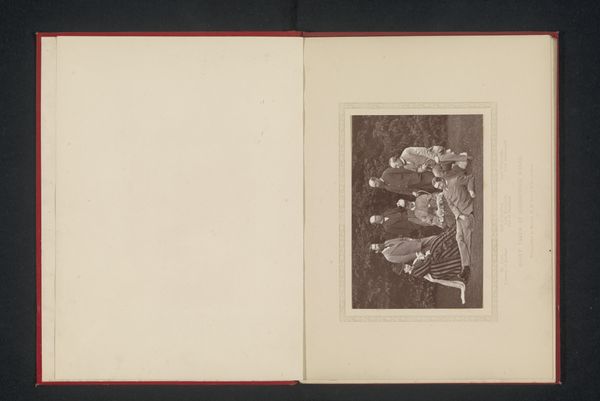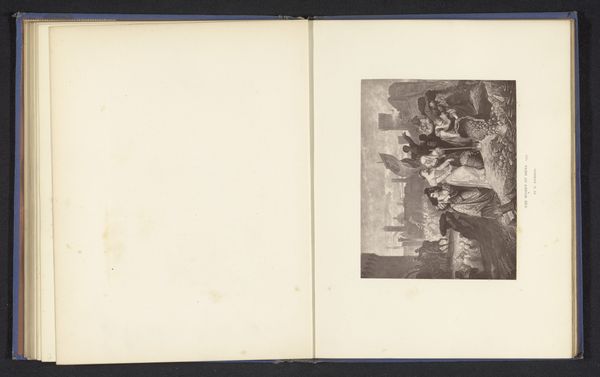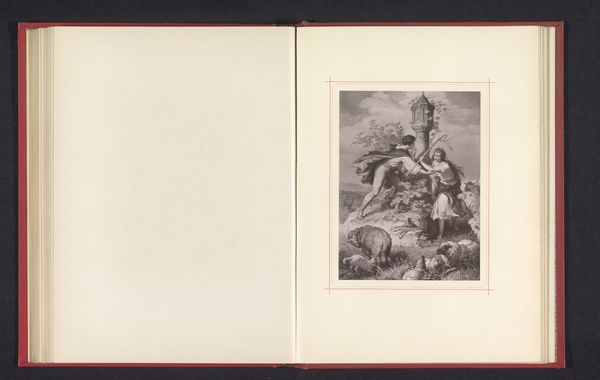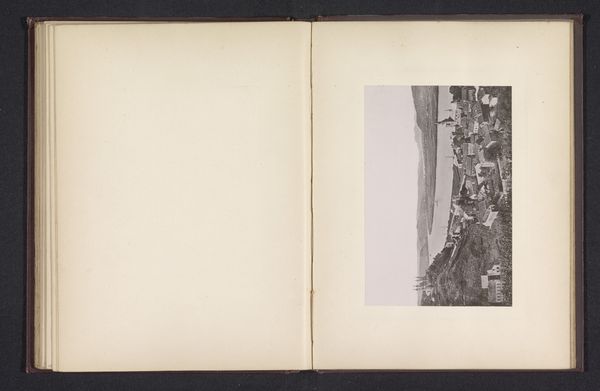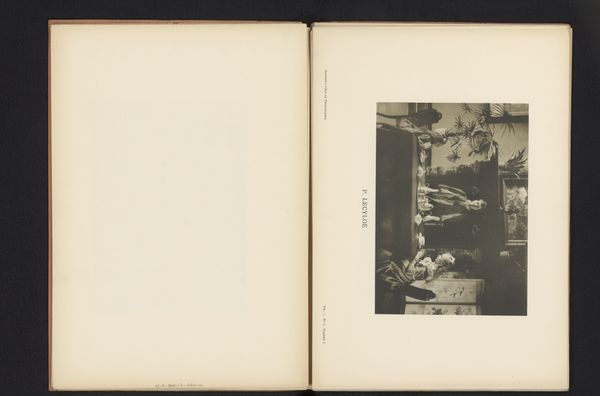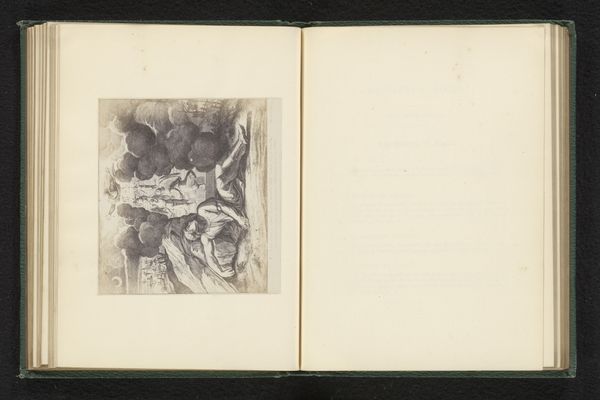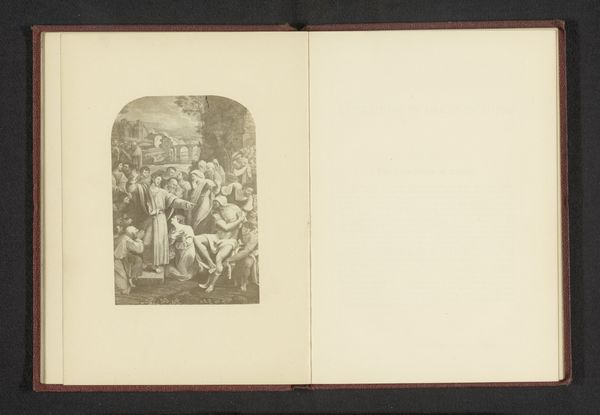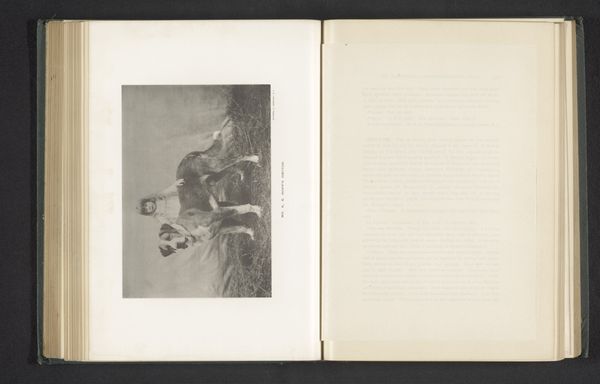
Fotoreproductie van een tekening, voorstellende Johann Wolfgang von Goethe schaatst op een bevroren rivier te Frankfurt before 1880
0:00
0:00
anonymous
Rijksmuseum
Dimensions: height 161 mm, width 112 mm
Copyright: Rijks Museum: Open Domain
Editor: Here we have "Fotoreproductie van een tekening, voorstellende Johann Wolfgang von Goethe schaatst op een bevroren rivier te Frankfurt", a graphite drawing printed before 1880 and held at the Rijksmuseum. It's a very dynamic composition with many figures in movement, but what strikes me is the dramatic lighting that highlights Goethe as he glides across the ice. What are your impressions? Curator: The composition's success lies in its deliberate arrangement of forms and light. Note the artist’s command of line, particularly in rendering the figure of Goethe. The dramatic fall of drapery, the elongated limbs… It’s almost a study in controlled diagonals. The contrast between light and shadow, evident across the frozen expanse, serves to both amplify the drama and emphasize the corporeal form against the blanched landscape. Do you observe how the figures are distributed? Editor: Yes, I see what you mean. The secondary figures form a sort of chorus around Goethe, almost like stage actors emphasizing the main character through their posture and expression. Curator: Precisely! And observe how the cityscape in the distance—a faint suggestion of Frankfurt—acts as a backdrop, almost like a theatrical set, containing the energetic foreground. The print as a medium allows the artist to control distribution while disseminating this frozen tableau to a broader audience. What do you think the artist hopes to convey to a nineteenth-century audience? Editor: I think that perhaps it shows a very public persona in a very intimate or individual moment. Perhaps they found that dynamic, that tension, particularly striking or telling. Curator: An astute observation! This photograph, while a copy of an earlier work, gains its own significance by allowing new interpretations of historical personages through manipulation of the medium itself. This manipulation amplifies not just what is seen, but how. Editor: This discussion has deepened my understanding of how much composition can direct the viewers eye in this piece, and I see now how the artist has managed to guide me to the same dynamic moment that has stood out to me initially. Curator: And in that, you’ve understood the relationship between form and experience and I, as well.
Comments
No comments
Be the first to comment and join the conversation on the ultimate creative platform.
